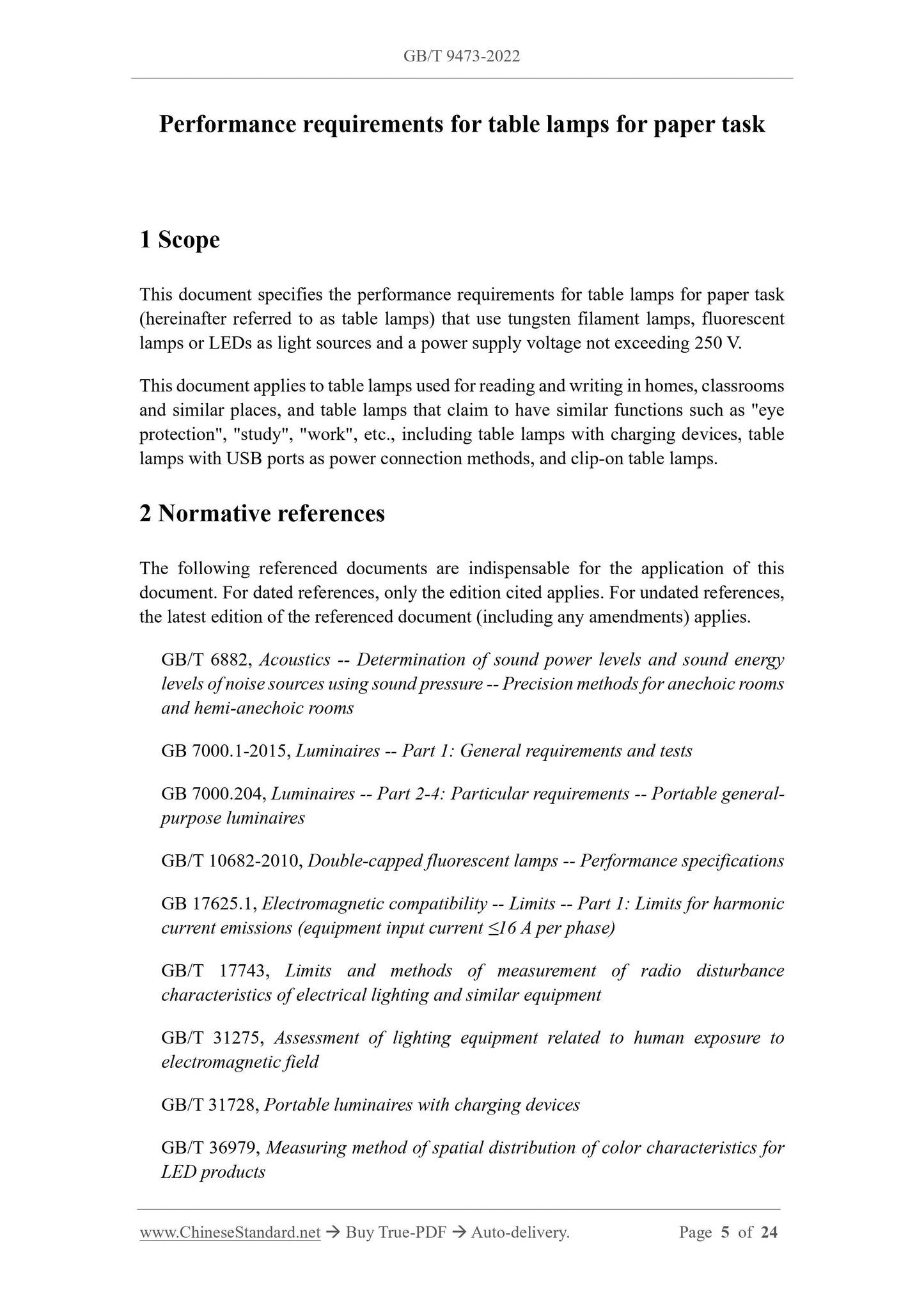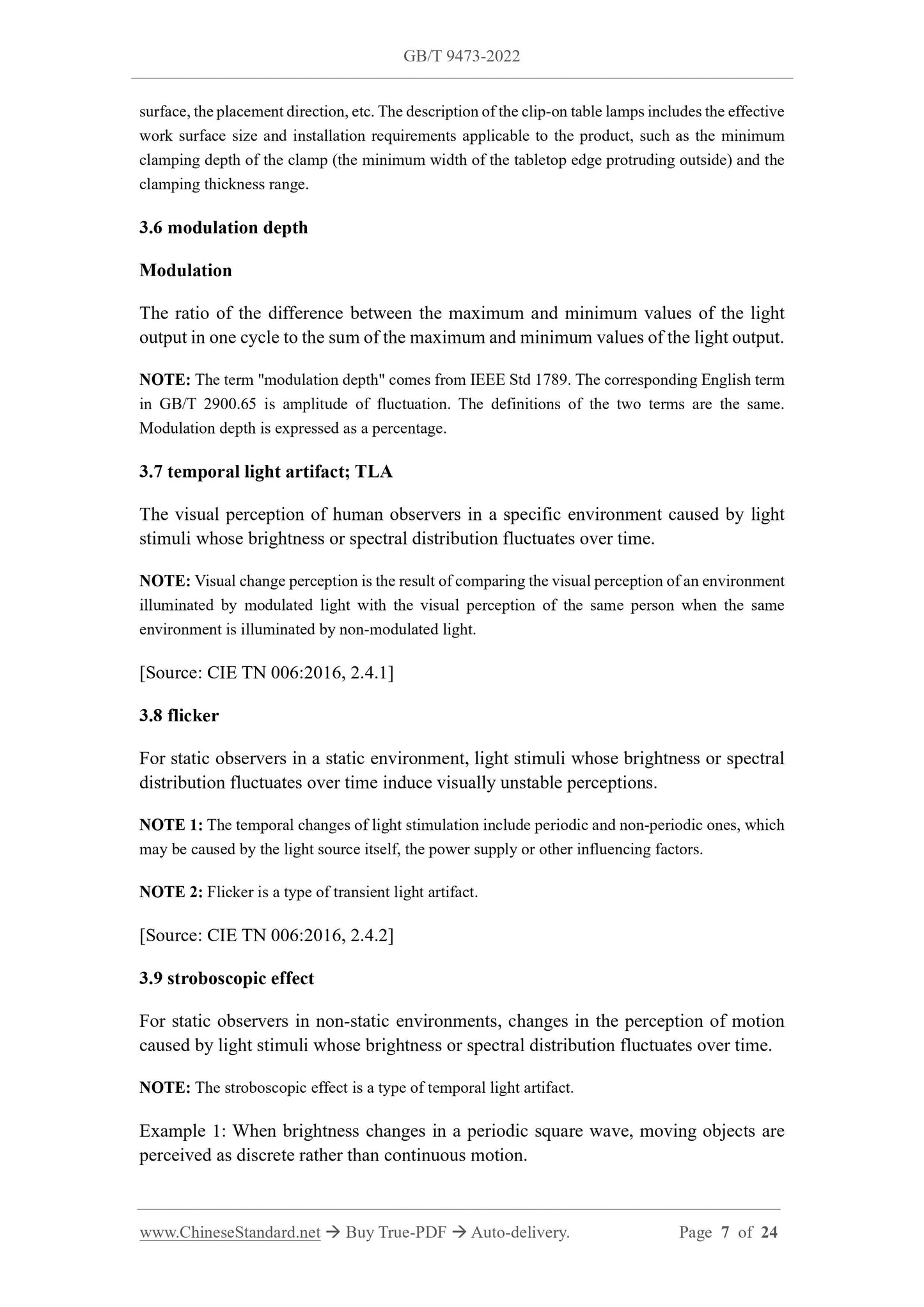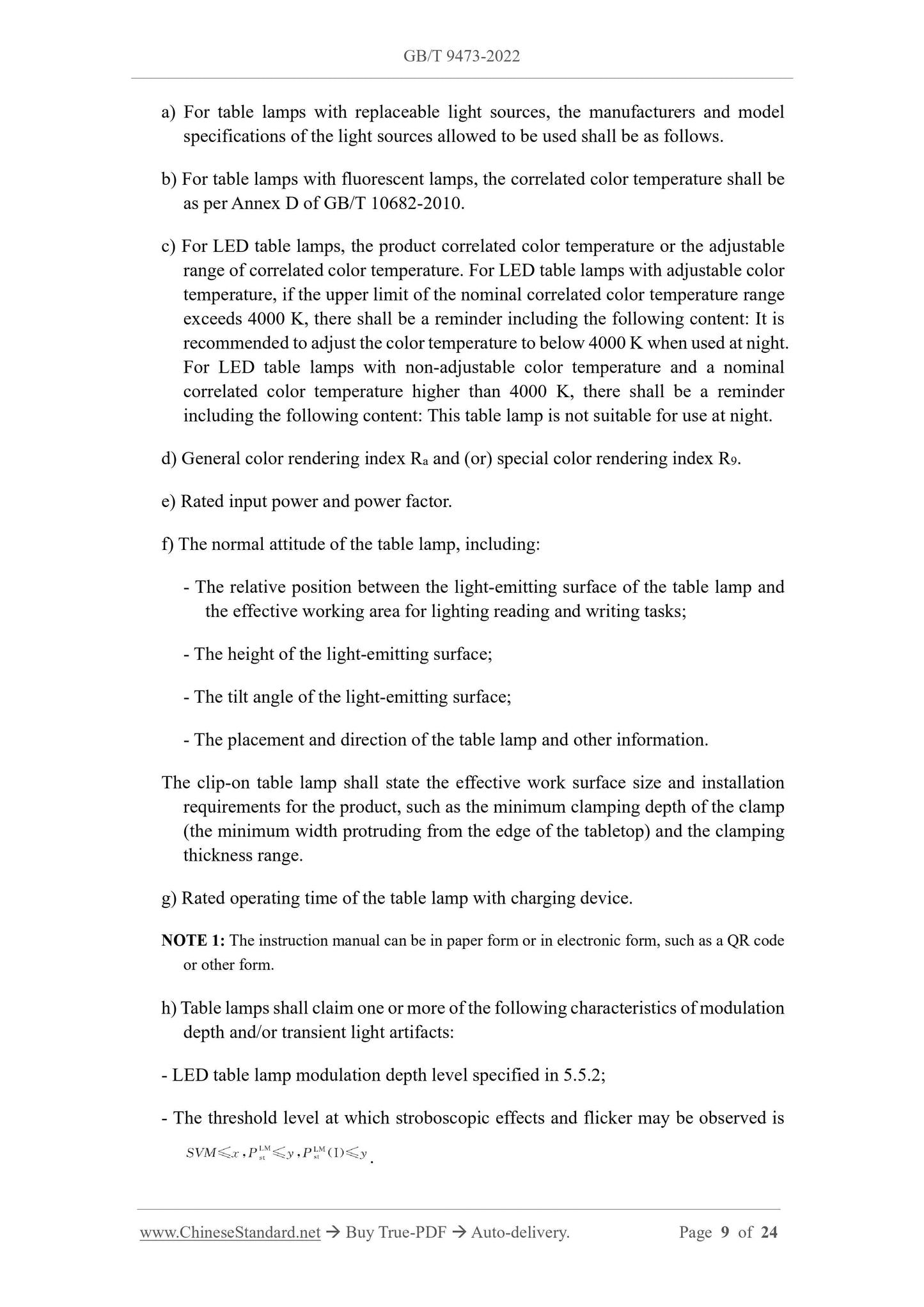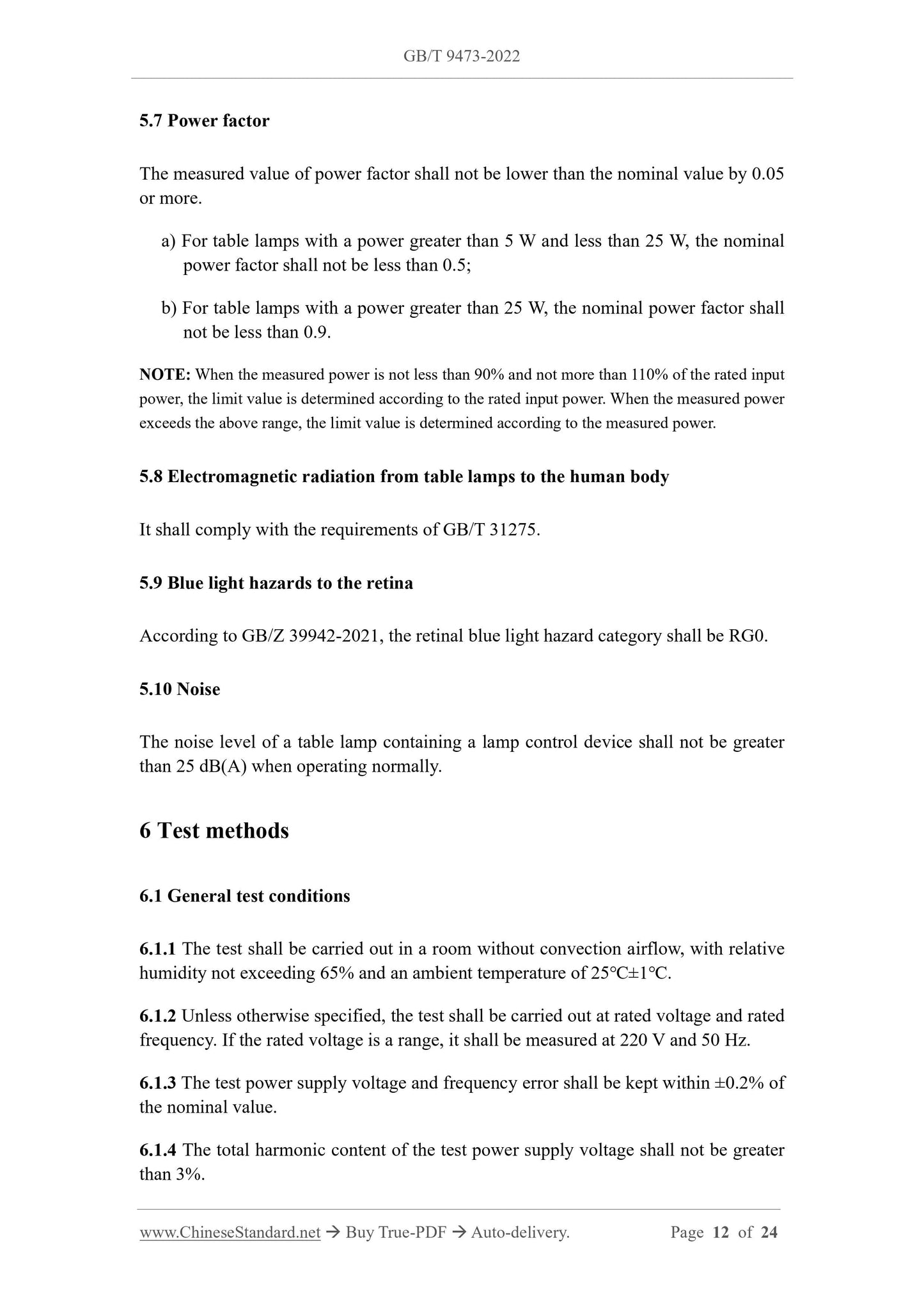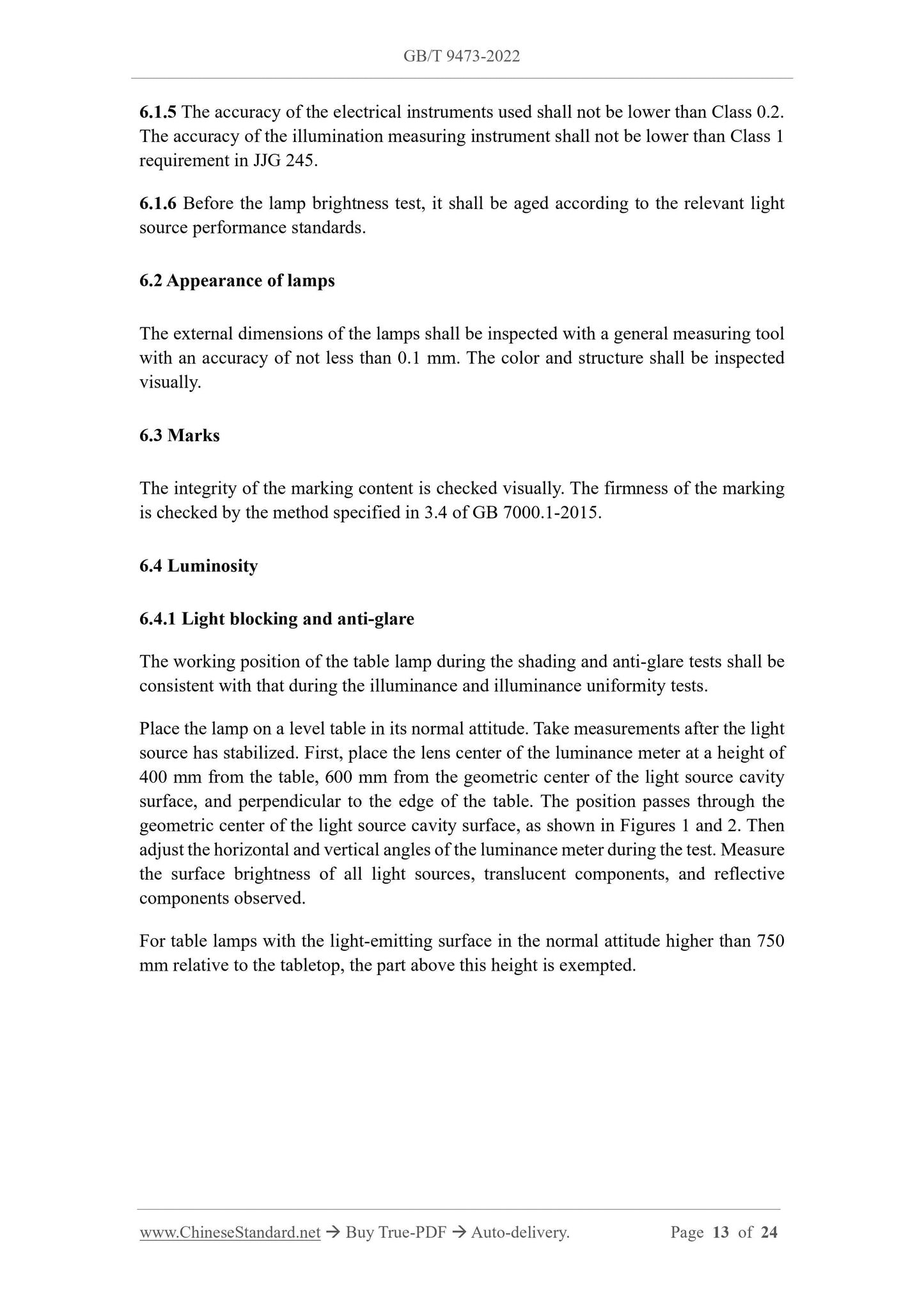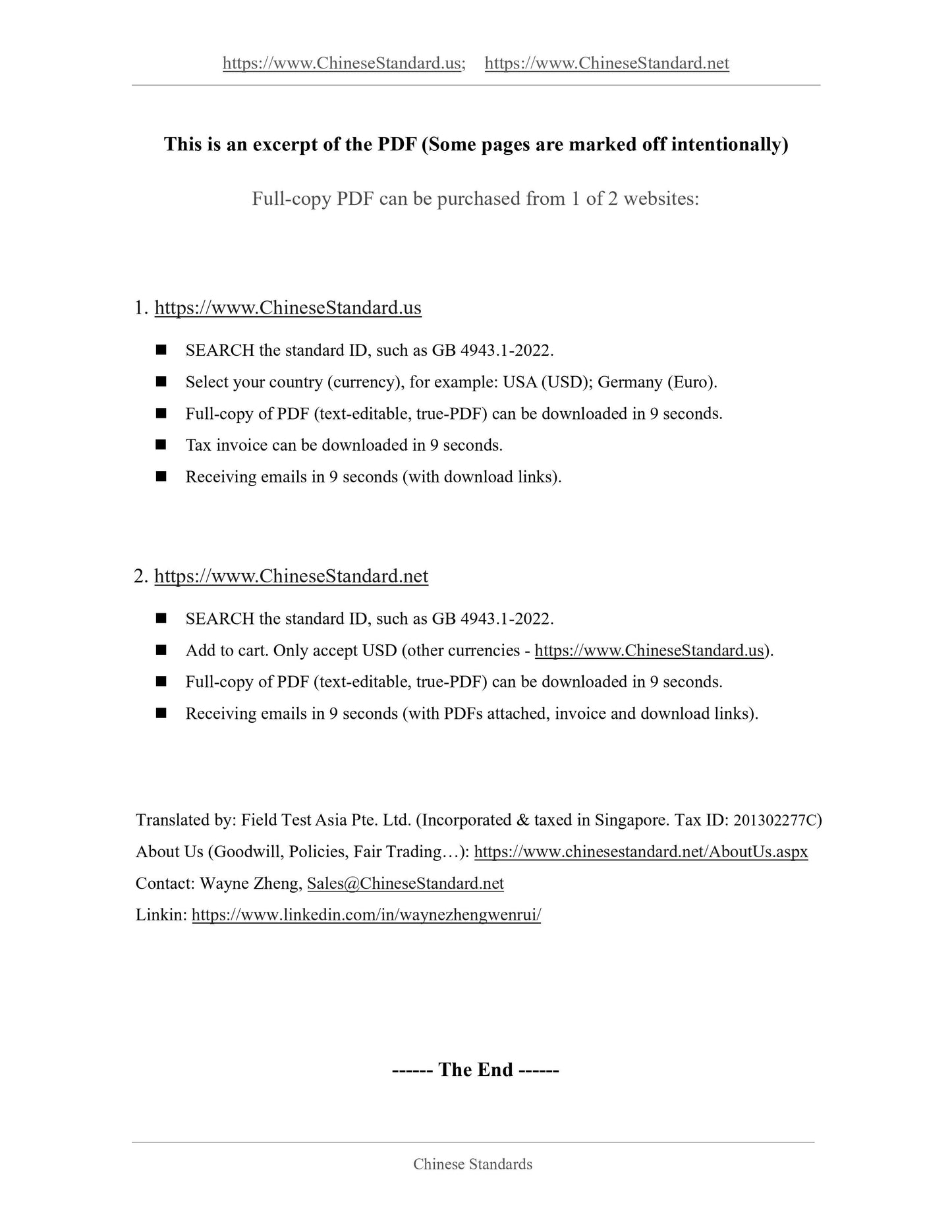1
/
of
8
www.ChineseStandard.us -- Field Test Asia Pte. Ltd.
GB/T 9473-2022 English PDF (GB/T9473-2022)
GB/T 9473-2022 English PDF (GB/T9473-2022)
Regular price
$245.00
Regular price
Sale price
$245.00
Unit price
/
per
Shipping calculated at checkout.
Couldn't load pickup availability
GB/T 9473-2022: Performance requirements for table lamps for paper task
Delivery: 9 seconds. Download (and Email) true-PDF + Invoice.Get Quotation: Click GB/T 9473-2022 (Self-service in 1-minute)
Newer / historical versions: GB/T 9473-2022
Preview True-PDF
Scope
This document specifies the performance requirements for table lamps for paper task(hereinafter referred to as table lamps) that use tungsten filament lamps, fluorescent
lamps or LEDs as light sources and a power supply voltage not exceeding 250 V.
This document applies to table lamps used for reading and writing in homes, classrooms
and similar places, and table lamps that claim to have similar functions such as "eye
protection", "study", "work", etc., including table lamps with charging devices, table
lamps with USB ports as power connection methods, and clip-on table lamps.
Basic Data
| Standard ID | GB/T 9473-2022 (GB/T9473-2022) |
| Description (Translated English) | Performance requirements for table lamps for paper task |
| Sector / Industry | National Standard (Recommended) |
| Classification of Chinese Standard | K72 |
| Classification of International Standard | 29.140.40 |
| Word Count Estimation | 18,125 |
| Date of Issue | 2022-12-30 |
| Date of Implementation | 2024-01-01 |
| Older Standard (superseded by this standard) | GB/T 9473-2017 |
| Issuing agency(ies) | State Administration for Market Regulation, China National Standardization Administration |
Share


